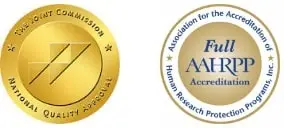Congenital Vertical Talus Ortho
Congenital vertical talus (CVT) is an uncommon disorder of the foot and manifests as a “rigid rockerbottom flatfoot”. There is an irreducible and rigid dorsal dislocation of the navicular on the talus radiographically. If left untreated, it results in a painful and rigid flatfoot with weak push-off power. CVT is also referred to as ‘congenital convex pes valgus’.Manipulation and casting, was the earliest form of treatment. Realization dawned gradually that surgical treatment in majority is inevitable.Several authors, beginning with Osmond-Clark in 1956, Herndon and Heyman in 1963, and Coleman in 1970, described staged, 2-incision reconstructive surgery
1,2,3. The first stage in the Coleman procedure consisted of lengthening the extensor digitorum longus (EDL), extensor hallucis longus (EHL), and tibialis anterior, with capsulotomies of the talonavicular and calcaneocuboid joints and release of the talocalcaneal interosseous ligament. The second stage consisted of a tendo-Achilles lengthening (TAL) and a posterior capsulotomy of the ankle and subtalar joints. After noting a high incidence of complications with the 2-stage technique, Ogata and Schoenecker (1979) recommended a single-stage procedure with a medial approach
4. Kodros and Dias (1999) have also published their results using a single-stage approach with a Cincinnati incision
5. In 1987, Seimon described a single-stage dorsal approach
6. The EHL and peroneus tertius are tenotomized, and the talonavicular joint is opened. The talonavicular joint is reduced and held with a Kirschner wire (K-wire). The Achilles tendon is lengthened percutaneously. Stricker and Rosen (1997) have published their experience with this technique, as have Mazzocca and Thomson (2001), and both groups have noted excellent results with few complications
7,8.The etiology is unknown, but CVT frequently is associated with a wide variety of neuromuscular disorders. Ogata and Schoenecker proposed a classification system that divides patients into 1 of 3 groups: those with idiopathic, genetic/syndromic, or neuromuscular CVT
4. Coleman divided CVT into 2 types
3. Type 1 was associated with a calcaneocuboid dislocation, while type 2 was not associated with a calcaneocuboid dislocation. This distinction is important clinically because type 1 deformity (associated calcaneocuboid dislocation) is stiffer, and particular attention must be paid to releasing the calcaneocuboid joint.In a 1983 literature review, Jacobsen and Crawford reported only 273 cases
9. Some have estimated incidence of CVT to be one tenth that of congenital clubfoot. Otherwise, incidence in India alone is unavailableClinically, CVT presents as a rigid flatfoot with a rockerbottom appearance of the foot. The calcaneus is in fixed equinus, and the Achilles tendon is very tight. The hindfoot also is in valgus, while the head of the talus is found medially in the sole, creating the rocker bottom appearance (Fig.2). The forefoot is abducted and dorsiflexed. The foot is stiff. In ambulatory children, calluses can develop under the head of the talus, which is very prominent along the plantar-medial foot. Associated genetic syndromes must be excluded. Surgery is indicated when the talonavicular joint is found to be unreducible after a trial of serial casting. Although most patients require surgical intervention, initial serial casting with the foot in plantarflexion more importantly, helps to stretch out the contracted dorsal skin, tendons, and joint capsules, which should be helpful at the time of surgery. Lateral radiographs of the foot in maximal plantarflexion can reveal if the navicular is reducible.The hallmark of the deformity is an irreducible and rigid dorsal dislocation of the navicular on the talus. Seimon hypothesized that a contracture of the tendo-Achilles posteriorly creates equinus of the calcaneus with increased verticality of the talus, while contracture of the EDL (and sometimes EHL and tibialis anterior) pulls the navicular onto the dorsum of the navicular
6. In feet with greater involvement or in older children, more contractures and deformity (eg, contractures of the tibialis anterior and EHL anteriorly, peroneus tertius and inferior retinaculum of the ankle anterolaterally, peroneus brevis and longus laterally with the calcaneofibular ligament, and the tibiotalar joint posteriorly) are present.A case management of bilateral CVT in a syndromic child is described for better understanding of this condition.
A 2-year old female girl presented to the author with bilateral foot deformities present since birth. She is the only child of her parents born after full-term pregnancy and normal vaginal delivery. The child apparently exhibited delayed physical milestones and commenced walking with an abnormal gait (difficulty in balancing) since 3-4 months. The girl otherwise shows good awareness and intelligence and responds well to direct commands. There are deformities of both upper limbs with difficulty in extending fingers on both sides. The child exhibits abnormal facies with bilateral ptosis (Fig.1)
. On examination, the feet had calcaneo-valgus deformities on both sides with ‘rocker-bottom’ shape over soles (Fig.2)
. The deformities were rigid with minimal passive plantar flexion possible. The neuro-vascular status of the lower limbs was normal. The lateral views (both normal & forced plantar flexion) of both feet showed ‘vertical talus’ and irreducible talo-navicular dislocations (Fig.3)
. The child was thoroughly investigated by the pediatrician for any obvious organic visceral or spinal anomaly, and was cleared on that account.After a thorough discussion with the mother where the line of management and prognosis, was discussed in great detail, it was decided to give 2 sittings of manipulation and casting of both feet 15 days apart; and then to admit the child for bilateral foot surgeries, and tackling the upper limb deformities later through conservative means (PT and splints). After the standard protocol of pediatric clearance and PAC, the child underwent surgical feet correction on both sides in one sitting.A single-stage correction was done using the dorsal approach. The author generally prefers the dorsal approach, using a modified Ollier incision.In the author’s preferred technique, dissection was performed under tourniquet control. The extended incision was dorsal and started from a point just a cm below the tip of lateral malleolus, and extended distally and anteriorly and then curved medially over the sinus tarsi region and towards the base of the 1st metatarsal. Halfway through, the incision continued more medially, distally and posteriorly, stopping over the medial aspect of the medial cuneiform (Fig.4)
. The superficial peroneal and sural nerves were identified and protected. A contracted peroneus tertius was released, as well as an abnormal band of the inferior retinaculum causing a tether from the tibia to the calcaneus. The dorsalis pedis vein, artery, and the deep branch of the peroneal nerve were protected, while the tibialis anterior, EHL, and extensor digitorum communis (EDC) were retracted. The talonavicular joint was visualized and opened dorsally, medially, and laterally. The calcaneocuboid joint also was opened along its dorsal, medial, and lateral aspect. Step- cut lengthening of peroneus longus and brevis was done. The tibialis anterior tendon was transferred to the talar neck on both sides. Percutaneous tendo-achilles tenotomies were performed. Appropriate K-wires were used to hold the talonavicular joints on both sides (Fig.5)
. Above-knee POP casts were given with ankles in neutral positions.Sutures were removed at 3 weeks where the AK casts on both sides were given with ankles in 5-10 degrees of plantar flexion. The K-wires were removed 10 weeks after surgery (Fig.6)
, and presently the girl has been given walking short leg casts for 4 weeks. The author would remove the casts and use UCBLs (heel cups with passive arch support extensions) on both sides inside the shoes, keeping a regular follow-up in the future.Postoperative bracing is advised for children with myelodysplasia, arthrogryposis, or other syndromes to maintain correction and prevent recurrence
10. Complications can occur around the time of surgery (perioperative), or they can manifest early in the postoperative period or in the late postoperative period. Common complications in the perioperative period include infection, wound healing problems, and skin slough; however, these complications are not unique to CVT. In the first year or two after surgery, the deformity can recur, usually secondary to undercorrection. Undercorrection can occur because of incomplete talonavicular reduction, insufficient posterior ankle release, or residual forefoot abduction
7. Recurrence can also be attributable to neurologic causes, especially in patients with spina bifida. Dias reports a high recurrence rate in patients with spina bifida and believes that this high rate might be secondary to a tethered spinal cord or other neurologic abnormality
5. Avascular necrosis (AVN) of the talus is a unique complication of CVT surgery that was more often reported in the older literature and was associated with the 2-stage release and extensive surgery. AVN of the talus has not been reported in the recent articles by Dias, Seimon, Stricker, and Mazzocca. Late complications include restricted range of motion of the foot and ankle, which can contribute to calf muscle atrophy. This in turn can lead to easy fatigue of the affected limb.In general, the outcome and prognosis are good. Some minor calf atrophy and foot size asymmetry occur and are more noticeable in unilateral cases. Ankle range of motion is about 75% of normal. If AVN of the talus occurs, the results are less optimal due to ankle pain, stiffness, and weakness. Early diagnosis to allow for surgical correction in infants younger than 2 years also should help improve results. Controversy exists over the choice of surgical approaches
10,11,12. However, the choice of structures to be released is a more important factor in determining outcomes paying special attention to the dorsal and dorsolateral contracted tissues. Controversy also exists over the need for an anterior tibialis tendon transfer but this is preferred by the author in the above scenario
13,14.
References
- Osmond-Clark H: Congenital vertical talus. J Bone Joint Surg Br 1956; 38: 334.
- Herndon CH, Heyman CH: Problems in the recognition and treatment of congenital pes valgus. J Bone Joint Surg Am 1963; 45: 413-29.
- Coleman SS, Stelling FH 3rd, Jarrett J: Pathomechanics and treatment of congenital vertical talus. Clin Orthop 1970 May-Jun; 70: 62-72.
- Ogata K,Schoenecker PL,SheridanJ: Congenital vertical talus and its familial occurrence: an analysis of 36 patients. Clin Orthop 1979 Mar-Apr; (139): 128-32.
- Kodros SA, Dias LS: Single-stage surgical correction of congenital vertical talus. J Pediatr Orthop 1999 Jan-Feb; 19(1): 42-8.
- Seimon LP: Surgical correction of congenital vertical talus under the age of 2 years. J Pediatr Orthop 1987 Jul-Aug; 7(4): 405-11.
- Stricker SJ, Rosen E: Early one-stage reconstruction of congenital vertical talus. Foot Ankle Int 1997 Sep; 18(9): 535-43.
- Mazzocca AD, Thomson JD, Deluca PA: Comparison of the posterior approach versus the dorsal approach in the treatment of congenital vertical talus. J Pediatr Orthop 2001 Mar-Apr; 21(2): 212-7.
- Jacobsen ST, Crawford AH: Congenital vertical talus. J Pediatr Orthop 1983 Jul; 3(3): 306-10.
- Drennan JC: Congenital vertical talus. Instr Course Lect 1996; 45: 315-22.
- Clark MW,D’Ambrosia RD,FergusonAB: Congenital vertical talus: treatment by open reduction and navicular excision. J Bone Joint Surg Am 1977 Sep; 59(6): 816-24.
- Dodge LD, Ashley RK, Gilbert RJ: Treatment of the congenital vertical talus: a retrospective review of 36 feet with long-term follow-up. Foot Ankle 1987 Jun; 7(6): 326-32.
- Duncan RD, Fixsen JA: Congenital convex pes valgus. J Bone Joint Surg Br 1999 Mar; 81(2): 250-4.
- Napiontek M. Congenital vertical talus: a retrospective and critical review of 32 feet operated on by peritalar reduction. J Pediatr Orthop 1995; 4:179-87.


